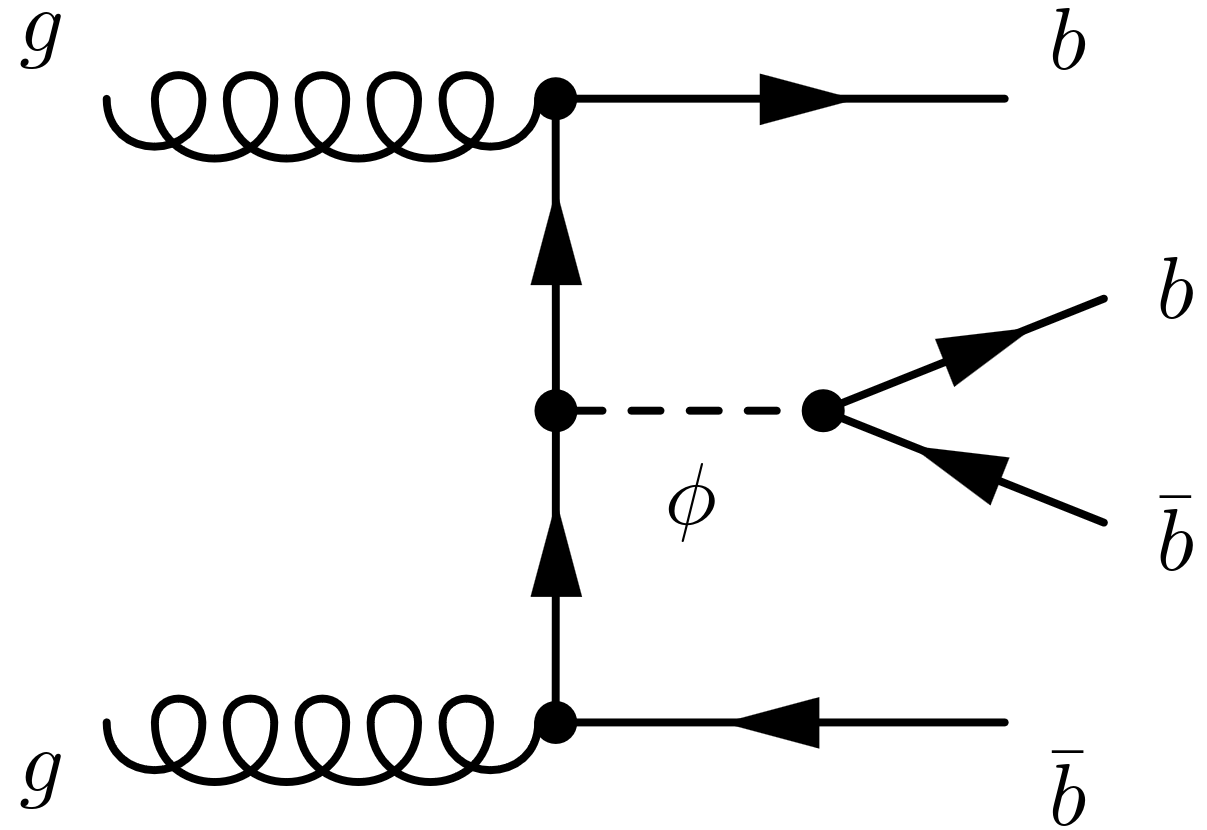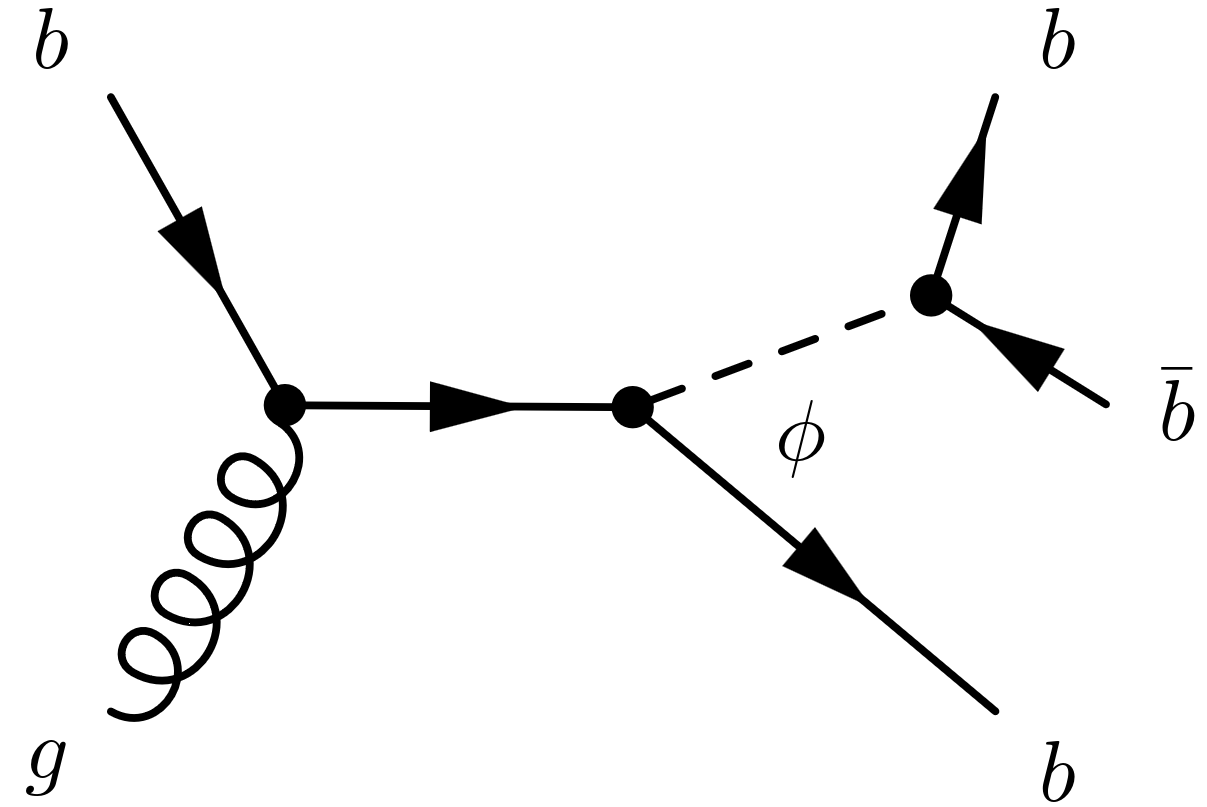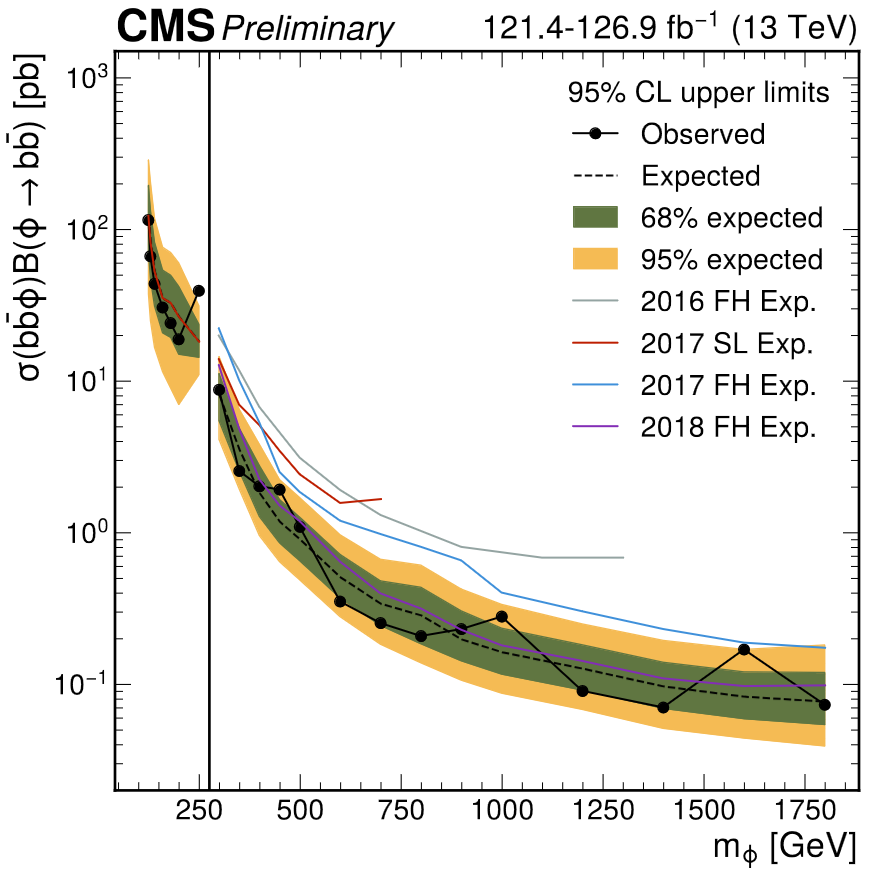
A particle compatible with the Higgs boson of the standard model (SM) was observed in 2012 by the ATLAS and CMS Collaborations, with a mass of about 125 GeV. Could there be other heavier Higgs bosons, as predicted in some theories trying to address the shortcomings of the SM? There have been several searches for such particles in different mass ranges, and with different properties such as the electric charge. This week at ICHEP, the CMS collaboration presented a new result in search for heavy Higgs bosons decaying to bottom (b) quarks, and produced in association with at least one additional b quark, as demonstrated in Fig. 1. The b quarks give rise to collimated sprays of particles reconstructed as jets, each containing a b hadron. The study relies on state-of-the-art techniques to identify jets that originate from b quarks. Using innovative approaches for the real-time selection of signal events out of proton-proton collisions, CMS researchers were able to extend the previous searches: for the first time, the existence of new Higgs bosons with masses very close to the observed one at 125 GeV is probed.
 |
 |
Figure 1: schematic view of a heavy Higgs boson (𝜙) production in association with and decaying to b quarks.
Conventional methods for online selection are based on the presence of two jets with large momentum that are likely to originate from b quarks. The high-momentum requirement on jets imposes a threshold of 300 GeV on the mass of the particle that has supposedly decayed to two b quarks -- here the new Higgs boson. This means new Higgs bosons with masses lighter than 300 GeV would be missed by such a search. The new method instead exploits the b hadron decays to relatively soft muons within the jets to identify b jets. As a result, mass ranges down to 125 GeV can be probed for the new particle (see Fig. 2).

Figure 2: Observed and expected limits on the product of the cross section and branching fraction for an additional Higgs boson decaying to b quarks and produced in association with a b quark. The orange line corresponds to the expected limit from the search relying on a trigger including the presence of muons inside b jet cones. The gray line corresponds to the expected limit from the 2016-only analysis published previously by the CMS Collaboration.
The same figure also compares the new result with an earlier study using the data collected in 2016. Evidently much stronger upper bounds are placed on the probability for the signal production. This is mostly because of the latest CMS machine-learning algorithms for the b-jet identification. In addition, the power of the LHC data is used to properly estimate the extremely abundant multijet backgrounds, and results in a significant improvement in upper bounds.
Placing upper bounds on the probability of signal production means that no sign of a new Higgs boson is found. As innovative data analyses are narrowing down the possibilities for the existence of new particles over wider and wider mass ranges, it is becoming more and more exciting to look into the new LHC data in search for ever rarer signals.
Edited by: Muhammad Ansar Iqbal and Abideh Jafari
Read more about these results:
-
CMS Physics Analysis Summary (SUS-24-001) "Search for bosons of an extended Higgs sector in b quark final states in proton-proton collisions at 13 TeV "
-
Display of collision events: CERN CDS
-
@CMSExperiment on social media: Bluesky - Facebook - Instagram - LinkedIn - TikTok - Twitter/X - YouTube

